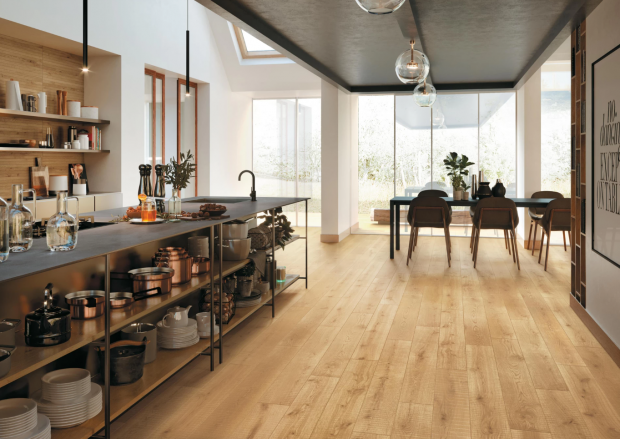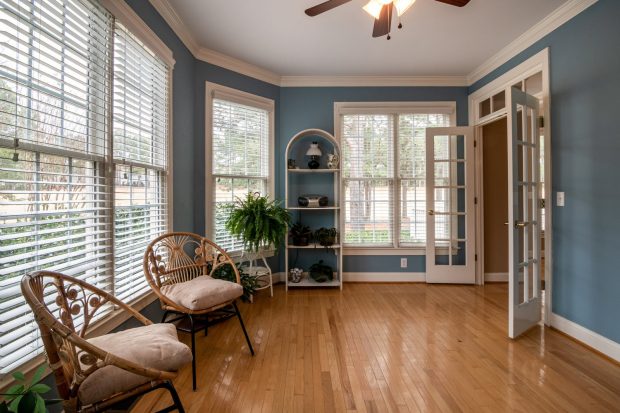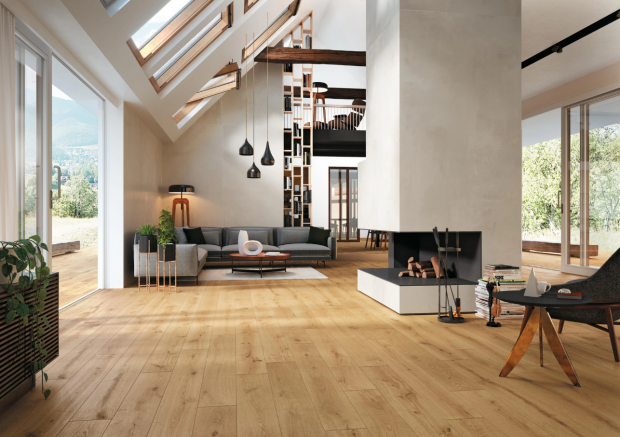If you’re looking for a flooring material that will make your home look warm and inviting, wood-look porcelain tiles may be just what you need. There’s no doubt that wood look porcelain tiles are becoming a popular flooring choice for many homeowners.
And it’s easy to see why! These tiles offer the beauty and warmth of natural hardwood, but with the added benefit of durability and low maintenance. Plus, they come in a variety of color options so you can find the perfect hue to match your home décor.

Few Tips for Startup
If you’re thinking about adding wood look porcelain tiles to your living room or family room, here are some tips to help get you started:
- Consider using them as the main flooring material. Wood look porcelain tile is an ideal option for high-traffic areas since it stands up well against everyday wear and tears. The natural colorings and grain patterns will also create an earthy feel in these rooms, which can be inviting for both guests and family members alike.
- Incorporate them into your kitchen backsplash design. A backsplash is a great way to add personality and style to your kitchen without breaking the bank – and using wood look porcelain tiles can give your space an instant upgrade, you can choose from different shapes, sizes, textures, and colors to create a design of your choice.
- Install them in your bathroom flooring or shower surrounds. Wood look porcelain tiles can also be a great choice for bathrooms, as they add an extra layer of warmth and drama to the space. In addition, they are durable and easy to clean so you can keep them looking their best no matter how many times they get wet!
Best Way to Lay Wood Look Porcelain Tiles
There are a few things to keep in mind when installing wood look tile:
- When selecting your tiles, make sure to choose ones with consistent color and texture. This will help create a cohesive look in your space.
- If you’re using different sizes of tiles, lay the larger tiles out first and then fill in the smaller spaces with the smaller tiles. This will ensure that your installation looks intentional and professional.
- Use spacers between each tile to maintain even spacing and avoid thin or bare spots along the edges of your installation.

Find a Unique Offset Pattern
Offset patterns are a popular way to create an interesting and unique look in your tile installation. There are several things to keep in mind when installing offset tiles:
- When selecting your tiles, make sure to choose ones with consistent color and texture. This will help create a cohesive look in your space.
- If you’re using different sizes of tiles, lay the larger tiles out first and then fill in the smaller spaces with the smaller tiles. This will ensure that your installation looks intentional and professional.
- Use spacers between each tile to maintain even spacing and avoid thin or bare spots along the edges of your installation.
Everything You Needs to Know about Wood-Like Tiles
There are many things to keep in mind when installing wood-like tiles, but perhaps the most important consideration is the orientation of the tiles. When you’re selecting your tile, make sure to choose ones with consistent color and texture so that your installation will look cohesive.
If you’re using different sizes of tiles, it’s best to lay out the larger tiles first and then fill in the smaller spaces with the smaller tiles. This will help ensure that your installation looks intentional and professional. Use spacers between each tile to maintain even spacing and avoid thin or bare spots along the edges of your installation
How to Find the Right Thinset?
The use of the right type of thinset is one of the most important aspects of any tile installation. Using a good quality thin-set will ensure that your tiles are securely attached to the surface, and it will also help prevent staining and water damage. There are several different types of thinset available on the market, so it’s important to select one that is specifically designed for use with ceramic tiles.
When you’re choosing a thinset, be sure to read the label carefully to make sure that it meets all your requirements. The thinset should be resistant to moisture and stain, and it should also have a long lifespan so that you don’t have to worry about replacing it often. It’s also important to choose a color that matches or complements your tile choice; if you’re using white subway tiles but buy a gray thin-set, your installation will look mismatched and unfinished.
The Grout Joint Size
The grout joint size is an important consideration when selecting a thin-set for your ceramic tile installation. A larger grout joint will require a less viscous thin-set, while a smaller grout joint will need a more viscous thin-set to avoid seeping into the cracks. In general, it’s best to use the thinnest possible mortar that will still fill the joints; this will minimize cracking and staining of the tiles over time.





